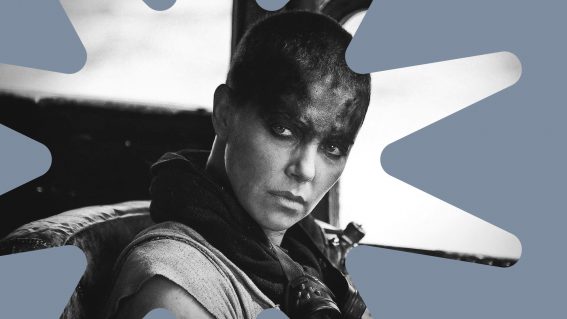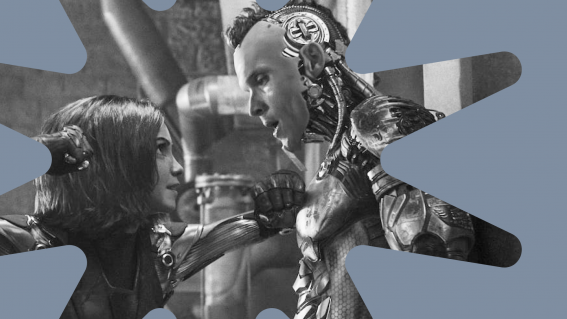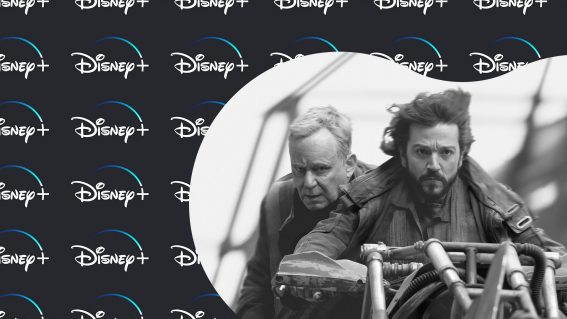Bono: Stories of Surrender is a good film – but the immersive version is magic
On Apple TV+, Bono: Stories of Surrender is a stylish documentary. On Apple Vision Pro, it’s a dream you step into.

Anybody who’s watched a film in an IMAX cinema, partly shot using IMAX cameras, understands how changes in aspect ratio can trigger a visceral response. For the uninitiated, here’s what happens. The film unfolds in the ordinary widescreen format, until suddenly, when an IMAX-shot moment begins, the screen expands vertically into a deeper, more immersive format, reaching down down down and up up up, occupying substantially more of your vision. You feel that change in your gut. These are the moments that make us think: “hell yeah, now we’re talking.”
Something similar happens throughout the immersive version of Bono: Stories of Surrender—if you’re lucky enough to be able to watch it. The Andrew Dominik-directed film, which captures in crisp monochrome a one-man show performed by the U2 superstar, is available in a “normal” version streamable on AppleTV+. The big apple’s very expensive virtual reality headset, Apple Vision Pro, includes a different version that takes advantage of its immersive features. The real “wow” moments in this experience occur when it conjures something unachievable in the ordinary flatscreen format.
These moments happen in a few different ways. Most notably, by ballooning from a standard widescreen presentation to the much more immersive 180 format, which consumes almost all of our vision. This occurs for the first time around the five minute mark, following a quasi-poetic spiel from Bono about the symbolic properties of air (“air is stamina; air is the confidence to take on big challenges”). When he performs the first song, Vertigo, the magic transition happens: we go from merely watching Bono, in a traditional sectioned-off frame, to feeling that we’re there, in the room, sharing the stage, close enough to smell him.
This is what the technology does: makes us feel that we’re intimately sharing the space with the performer. At the moment this has significant wow factor, particularly for those experiencing it for the first time. Even for someone like me, who has experienced it many times (including during Metallica and Zara Larrson VR performances) it’s still striking, indicates where the future of recorded musical performance is heading.
When Bono reaches the chorus of Vertigo (“you give me something I can feel…”) another magic moment happens: the lyrics, which are presented visually, stamped across the floor of the stage, lift into the air and float into the space around him. The way printed text becomes a spatial element, arching, curving, and springing to life, as if the words now have their own genetic makeup, their own independence of movement, reminded me of Dear Angelica, an exquisite virtual reality experience from 2017. In it a woman writes letters to her mother, and the words are pulled out and draped around us. It makes us feel like we’re not just watching art, but somewhere inside the art, in the space between canvas and paint.
Another way that Stories of Surrender defies the traditional movie frame is by returning it—then scribbling all over it. When Bono, just shy of the nine minute mark, describes the show we’re about to watch as “the tall tales of a short rockstar,” the film’s title is displayed in large yellow letters that extend beyond the borders of the frame, appearing above and across it. The equivalent would be like seeing the title of a TV show appear above your television screen, and onto the wall around it, escaping the rectangular prison. Sometimes words hurtle towards us, which also packs a punch; the 3D effect is more impressive on the Vision Pro than standard 3D movies.

Dominik deploys other illustrated elements to zhush up the experience. When Bono discusses how he was inspired by The Ramones, for instance, hand drawn-looking doodles of the band appear around him. Later, this effect is cranked to 11, when—during a rendition of Pride (In the Name of Love)—the crowd become hand-drawn figures. And again in Where the Streets Have No Name, when illustrated trees appear in and around them, animated rain falls down, and red flowers sprout among them. These moments look great through the headset, as if a talented illustrator has taken the screen space and drawn all over it.
They looked so good, in fact, I had to know how they appeared in the standard, non-immersive format on AppleTV+. I discovered something very interesting: they don’t exist at all. Bono is still there, talking and belting out songs, but the flourishes that made Vision Pro’s Stories of Surrender really sing were almost entirely absent. Casting my mind back, the immersive video almost felt like a dream. A crazy, eye-popping, fully dimensional dream, filling the space between me and the screen, and the stage and performer. These were the moments that made me think: “hell yeah, now we’re talking.”























